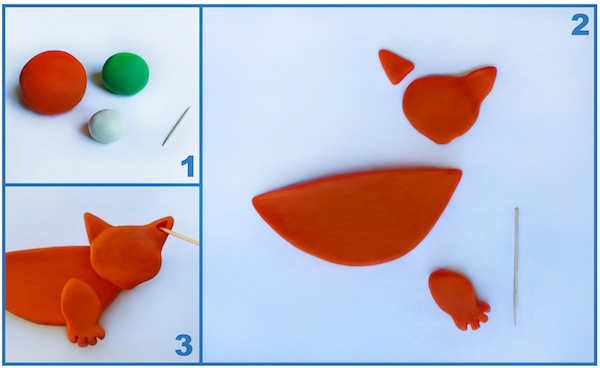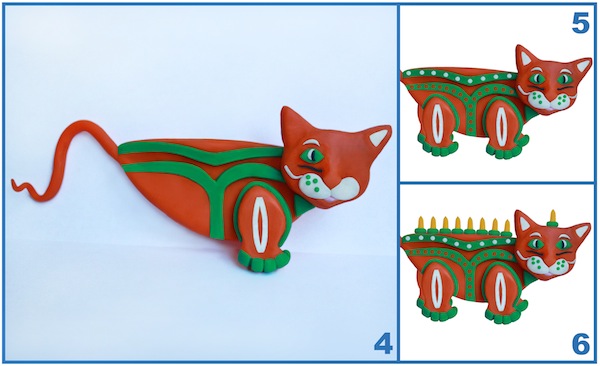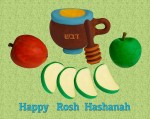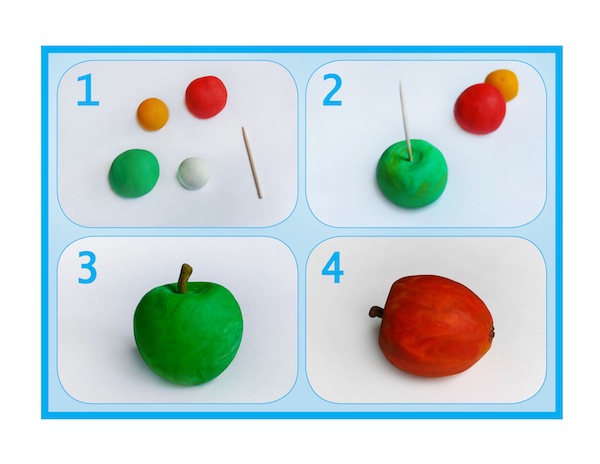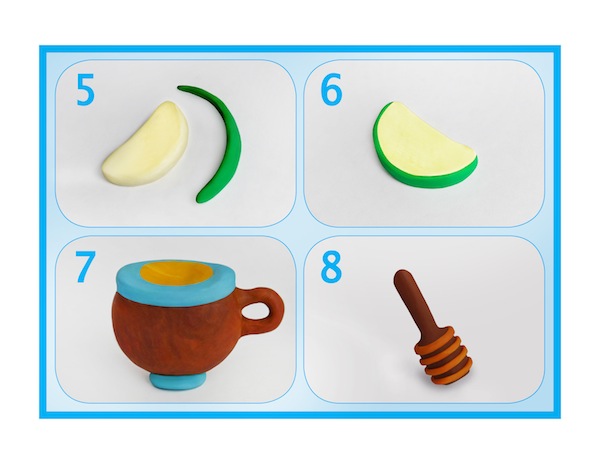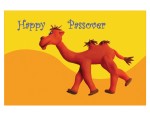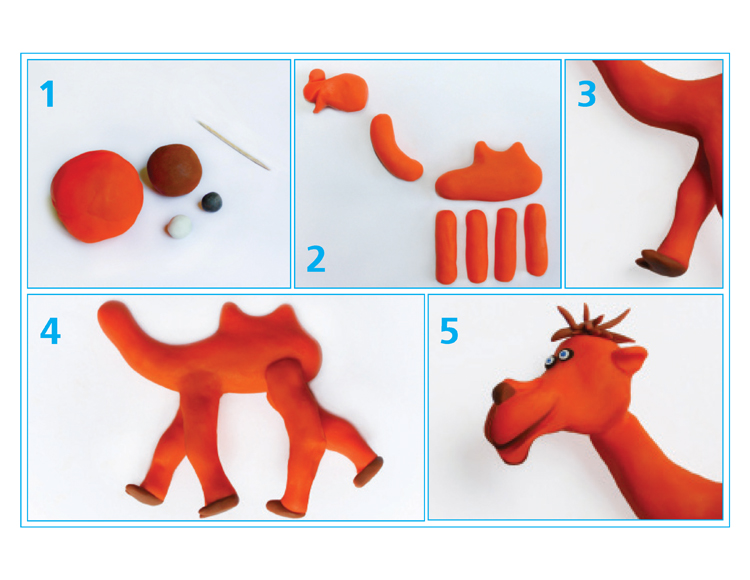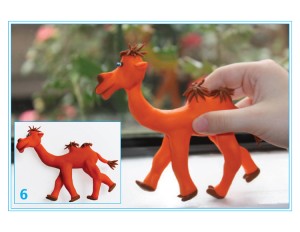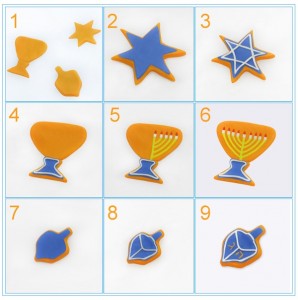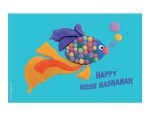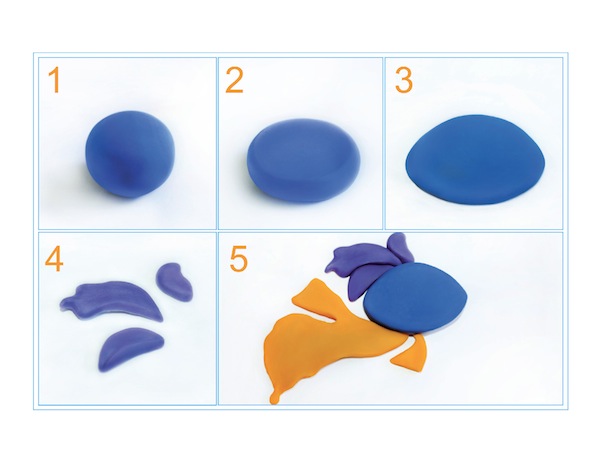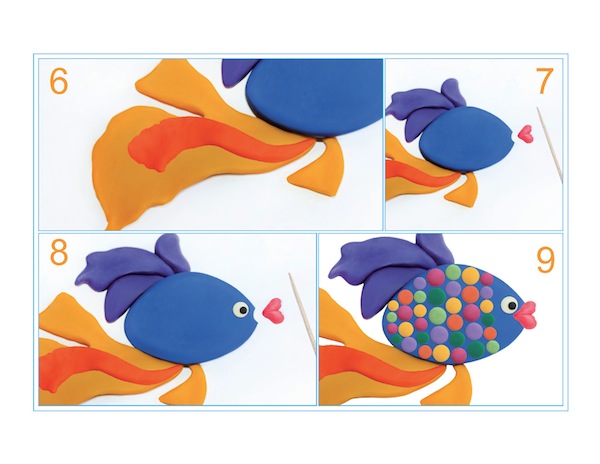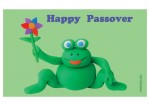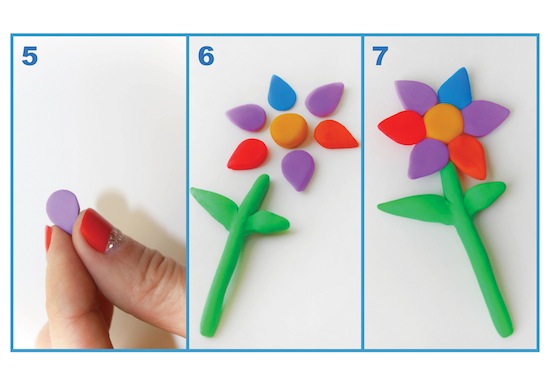Spring is the time of nature’s reawakening, when we are treated to so many vibrant and beautiful colors and shades. Spring is also when Jewish communities around the world celebrate the unique and important holiday of Passover. So why don’t we combine the two and make a festive Passover postcard with a spring butterfly against flowery background?
In making our postcard, we can unleash our imaginations! There are so many beautiful butterflies in the world – it is impossible to count them all. And there are no strict rules in art projects, so feel free to be creative, dear young artists. But, if you want to try and make your butterfly look like a real one, you will need to choose a design you can repeat, as both wings of a butterfly are the same in design and texture.
So, gather all the brown, black, blue, yellow, purple, green, pink and other colors of Plasticine you have at home. You will also need toothpicks. Now let’s get started!
 1. Take brown Plasticine and make the butterfly’s head, thorax (torso) and abdomen.
1. Take brown Plasticine and make the butterfly’s head, thorax (torso) and abdomen.
2. Put all the butterfly body parts together. Make black antennae (a butterfly’s “whiskers”). After that, make and attach blue eyes and a pink mouth.
3. Take yellow Plasticine and make one wing, attach it to the body on the top left side. Make one more wing – purple – and attach it underneath the yellow wing.
4. Use your fingers to make the wings smooth.
 5. Now make and attach identical wings to the right top and bottom sides. Make them smooth, too.
5. Now make and attach identical wings to the right top and bottom sides. Make them smooth, too.
6. Make beautiful ornaments for the top left yellow wing using, for example, green, blue, purple, red and pink colors, just like we did. You can use other colors, if you’d like.
7. Repeat the same design on the top right yellow wing.
8. Using the same technique, make colorful ornaments for the two bottom wings on both sides. You may use yellow, orange and blue colors to do that. Now your butterfly is ready!
To make the postcard, you can put your butterfly in front of some flowers, attaching it using a piece of wire or a thin stick, and take a picture of it with this flowery background. You can then print out the image, and you will have your own beautiful Passover postcard with a fluttering butterfly.
Happy Passover, dear Jewish Independent readers – to you and your families!
Lana Lagoonca is a graphic designer, author and illustrator (lunart.ca). At curlyorli.com, there are more free lessons, along with information about Curly Orli merchandise.



